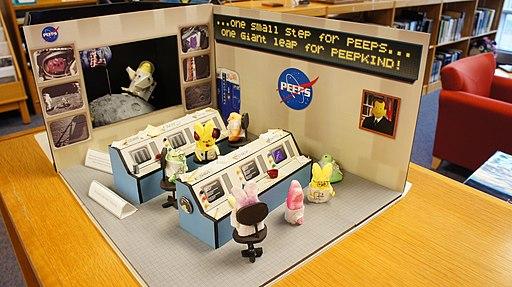When Your Landmarks Pass
Commentary by Steven A. Smith
My old landmarks are fading, the people who built them disappearing.
That happens to all of us as we age. I have known this intuitively. But now I am experiencing it. And it is unsettling.
Two of the living touchstones to my generational landmarks have died in the last few weeks.
Bob Born, the man known as the father of Peeps, died last week. And it was announced Saturday that Melinda Dillion, the actor who played Ralphie’s mom in “A Christmas Story, died on Jan. 9.
I wrote two weeks ago about how we mourn for certain celebrities with whom we connect at a meaningful point in our lives. I never felt that intimate connection with either Dillon or Born.
But I did connect to the cultural landmarks they embodied.
My friends know of my passionate love for all things Peeps. Growing up I understood Easter was not our holiday. But my sister and I still expected candy. And of all the candies waiting for us Easter morning, my favorites were the marshmallow Peeps.
As I now know after reading Bob Born’s obituaries, today’s Peeps were relatively new in the early 1950s. Peeps-like candies had been around for a few decades but had been handmade by a small candy company. When he purchased that company, Born, a mechanical engineer, developed processes to mass produce the colorful treats.
I have been addicted since my first bite. I understand some people think they are disgusting, but a Peep is godly nectar to some of us. I freeze them, blow them up in the microwave, or just eat directly from the box. Fresh or stale, it does not matter.
My passion has been known to colleagues wherever I work.
In Colorado Springs, I came to the office one day to find it stuffed with Peeps, hundreds of them. They were hidden in drawers, hung from the ceiling, tucked into the heating vents. For months, I would find a stray Peep in some office corner. And I would eat it. A stale Peep has a special appeal.
When I left Colorado for Salem, Oregon, a colleague shipped me a year’s supply.
In Spokane, I stole the idea for an annual Peeps diorama contest from The Washington Post and other news organizations. I loved it even as the newsroom thought it bonkers.

Born’s death does not mean the end of Peeps. But he was a touchstone to a beloved institution, a true cultural landmark.
Melinda Dillon was a wonderful actress, best known as the mother in “A Christmas Story.”
She was not an important celebrity in my life. But she was a touchstone to that most significant cultural event.
I still watch “A Christmas Story” every Christmas Eve. I grew up in the era depicted there and I do not think there is another movie that so perfectly captures that time and those personalities.
In the film, Dillon played a strong and loving mother who managed to be the boss in a post-war household … like my mother. And she could manage the Old Man, as my mother managed mine.
Peeps and “A Christmas Story” continue, of course. But the living connections to both are gone.
That is the nut of it. As we grow older, we may not lose our landmarks, but we inevitably lose the people who connect us to them and so with every year those landmarks fade a bit.
And that is a profound, unsettling change, even though their fading makes room for the new.
I do not worry overmuch about growing old. What would be the point? Growing older is far better than the alternative. Which is not to say that aging is without its issues.
I mourn the loss of robust health. I mourn the loss of dear family and friends. I am sad that the time remaining is so much less than the time I have had and that my time with my dear wife, Carla, is limited.
Regular readers know I am an unbeliever. I honestly believe we have only this one life. When it is over, we are done.
Carla, who is a believer, asked me recently how I keep from despairing. How, she asks, can I maintain hope in the face of inevitable loss? Am I not sad that this may be all there is? If my touchstones are dying and my landmarks fading, what do I have to look forward to, she asks?
Easy answer. I look forward to what we all have – this life in the here and now. Yes, we suffer loss. Yes, so much of what we knew is behind us, passing from view. And yes, our own end is inevitable.
But until that end comes, we have a life to live. There can be no despair in that.
Even with its limitations, the time left can be full, with triumphs, and tragedies, and joys, and even new landmarks with their touchstones.
The end is inevitable but that does not mean we must surrender our present in the meantime.
I can mourn the loss of touchstones and the fading of landmarks. But there is no future in nostalgia.
The future is tomorrow. And the day after. And the day after that. The future is however many days are left to us.







